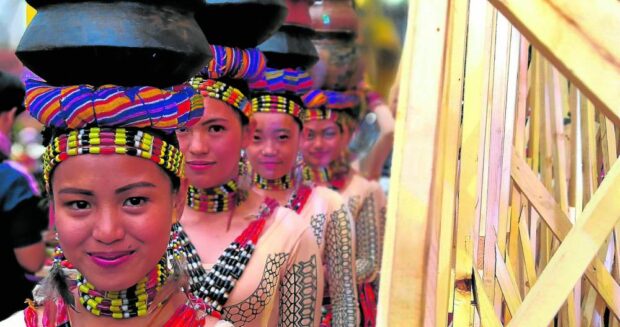Baguio pushes for ‘creative economy’ in Cordillera

GROWTH DRIVER Baguio City’s economy grew partly because of artisans and craftsmen who produced souvenir items, woven garments and high-quality silvercraft and woodcarvings that
made the summer capital a top tourist destination. So the country’s first “Creative City” is helping the rest of the Cordillera develop their “creative economies.” —EV ESPIRITU
BAGUIO CITY—Experts who helped achieve the city’s designation as the country’s first “Creative City” are hoping that towns and provinces in the Cordillera can build up their own creative industries and improve the region’s economy.
History professor Raymundo Rovillos, former chancellor of the University of the Philippines (UP) Baguio, said the government must document cultural assets in the provinces of Ifugao, Benguet, Abra, Apayao, Kalinga and Mountain Province, which could have contributed to the gross regional domestic product (GRDP).
Rovillos spoke on Thursday at the Cordillera leg of the Department of Trade and Industry’s (DTI) “Fiestakucha,” which rolled out programs and services offered by a new law, Republic Act No. 11904 (Philippine Creatives Industry Act), for both traditional “creative industries” like woodcarving and basket weaving, and modern creative enterprises like animation and game development.
He was part of a group that applied for Baguio’s membership in the World Creative Cities Network of the United Nations Education, Scientific and Cultural Organization (Unesco). This is composed of urban communities where “creative” enterprises contribute to the economy.
The summer capital, a hub since the 1960s for souvenirs like silvercraft, woodcarving, woven textiles and baskets, and home to National Artists Kidlat Tahimik and BenCab (Benedicto Cabrera), joined the network in 2017 as a creative city known for its crafts and folk art.
Article continues after this advertisementUsing a Unesco tool for measuring cultural activities, Rovillos said artisans and craftsmen throughout the Cordillera contributed 6.6 percent (P6,651,447,000) to the 2018 GRDP that was valued at P308,267,122,300.
Article continues after this advertisementInvestment
In 2019, Baguio invested P23,026,334.79 in its total public expenditure on heritage to preserve the city’s indigenous Filipino cultural assets and historical artifacts.
Combined with the Cordillera, “governmental and private institutions spent P1,293,899,009.80 on preserving, protecting, and conserving all forms of cultural and natural assets [which] translates to P181.38 per capita invested in cultural heritage,” according to the Baguio cultural report.
The report added: “The Baguio Flower Festival Foundation Inc. and the Baguio Arts and Crafts Collective Inc. spent P13.710 million on various cultural and creative-related activities in the city, like the annual Panagbenga Flower Festival and the Mandeko Kito Artisans Fair.”
Rovillos said the Unesco tool could be used to map the entire Cordillera’s cultural assets in order to assess how much more the government would need to invest in building “creative” enterprises. He said tourism appeared to be crucial to the creative industry.
On Sept. 26, when the festival began, lawyer Samuel Gallardo, the DTI Cordillera assistant director, said his agency had started profiling micro, small and medium enterprises engaged in backyard weaving, woodcarving, silvercraft and other indigenous crafts that supply the region’s markets. He said the DTI had completed the survey of 871 crafts and artisan traders in Baguio, and over 30 in Abra province.
Melting pot
Baguio has been a melting pot of traditional crafts because trading takes place in this American-built mountain city, according to studies and papers compiled by Rovillos and UP Baguio scholars.
Rovillos revealed that the craft industries for which Baguio was named a creative city “were in bad shape” before the COVID-19 pandemic struck.
“The silvercraft businesses were in decline after enjoying massive popularity in the 1970s and 1980s. Woodcarving [by Ifugao artisans who migrated to Baguio in the 1960s] suffered from competition with craftsmen in other provinces, and faced problems securing raw materials because the log ban meant they couldn’t cut trees,” he said.
“Being recognized as a creative city meant Baguio aspires to be better, and to be more sustainable given its urban problems,” Rovillos said.
“Creatives like artists think outside the box,” he said, noting that combining their ideas with engineers, technocrats and innovators “would be an explosive revolution that leads to change.”
Baguio tourism officer Aloysius Mapalo said the creative industry has been incorporated into the comprehensive land use plan and other city programs.
“If we don’t give regard to our culture, heritage and the environment, the result is urban decay,” he told delegates from the Cordillera provinces.